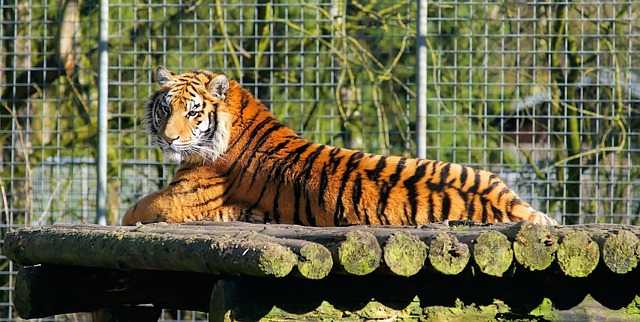Introduction:
In the vast realm of the animal kingdom, the tiger stands as a symbol of power, agility, and ferocity. Known for its remarkable hunting prowess and majestic presence, the tiger is an apex predator that commands respect. However, imagine a scenario where this majestic creature is dubbed the “Lazy Tiger.” Such a paradoxical notion raises intriguing questions about the interplay between perception and reality and the complexities that lie beneath the surface. While the image of a tiger lazing under the shade might initially raise eyebrows, the Lazy Tiger is a captivating creature that challenges our understanding of productivity and introduces us to the art of strategic leisure. In this exploration, we’ll delve deeper into the intricacies of the Lazy Tiger’s behavior, unveiling the secrets behind its seemingly lethargic demeanor and discovering the wisdom it imparts to the human pursuit of success.
The Lazy Tiger Myth:
The concept of a lazy tiger might seem contradictory at first glance, given the animal’s reputation as an efficient and formidable hunter. However, the Lazy Tiger myth serves as a metaphor for exploring the multifaceted nature of productivity, challenging conventional assumptions and inviting us to delve into the nuances of the term.
Perception vs. Reality:

Perceptions often shape our understanding of productivity, both in the animal kingdom and in human society. The Lazy Tiger challenges us to question preconceived notions and reconsider our definitions of efficiency and success. In the wild, a tiger may appear lazy when observed during inactivity, lounging under the shade of a tree. Yet, this seemingly idle behavior belies the strategic and energy-conserving nature of the big cat.
Wildlife experts explain that tigers are opportunistic hunters, expending energy selectively to maximize their chances of success during a hunt. The Lazy Tiger, therefore, is not truly lazy but rather conserving energy for essential bursts of activity. In a parallel manner, individuals labeled as “lazy” in human society may be engaged in a similar conservation of energy, channeling their efforts into bursts of productivity rather than continuous, visible exertion.
The Nature of Energy Conservation:
To understand the Lazy Tiger phenomenon, it is crucial to delve into the principles of energy conservation in the wild. Tigers, like many predators, are adept at managing their energy resources. They alternate between periods of rest and intense activity, ensuring that they are prepared for the demanding task of hunting. This rhythmic pattern challenges the notion that constant busyness equates to heightened productivity.
Human beings can draw valuable lessons from the Lazy Tiger’s energy management strategy. Embracing intermittent breaks, relaxation, and mindfulness can lead to enhanced focus and efficiency during periods of activity. Contrary to the societal emphasis on constant productivity, recognizing the value of rest and recuperation can foster a more sustainable and balanced approach to work and life.
The Importance of Play:
Observing a Lazy Tiger during periods of leisure reveals another fascinating aspect of their behavior – play. Tigers, like many intelligent animals, engage in playful activities that contribute to their cognitive development and overall well-being. This playful behavior serves a purpose beyond mere enjoyment; it sharpens their hunting skills, hones reflexes, and fosters social bonds.

For humans, the concept of play often takes a back seat to the seriousness of adult responsibilities. However, the Lazy Tiger invites us to reintegrate playfulness into our lives. Engaging in activities purely for enjoyment not only enhances creativity but also promotes mental and emotional well-being. By embracing the playfulness of the Lazy Tiger, individuals can unlock new dimensions of their potential and approach challenges with a refreshed perspective.
The Art of Strategic Laziness:
The Lazy Tiger embodies the art of strategic laziness, challenging us to rethink the traditional definition of hard work. In human society, the glorification of relentless hustle often overshadows the importance of strategic thinking and efficiency. The Lazy Tiger encourages us to question whether constant busyness is a true indicator of success or if a more deliberate, focused approach can yield better results.
Strategic laziness involves prioritizing tasks, optimizing workflows, and avoiding unnecessary exertion. It is not about avoiding work but rather about working smarter, not harder. Just as a tiger conserves energy for the crucial moments of the hunt, individuals practicing strategic laziness conserve their mental and physical resources for the most impactful endeavors.
Overcoming the Stigma:
The Lazy Tiger challenges the stigma associated with laziness, urging us to reconsider our judgments of both wildlife and fellow humans. Laziness is often viewed negatively in society, synonymous with a lack of ambition or dedication. However, the Lazy Tiger invites us to recognize that moments of apparent idleness can be integral to the creative and problem-solving processes.
In human psychology, downtime is essential for cognitive rejuvenation and innovation. The mind needs moments of rest to connect disparate ideas, foster creativity, and recharge for the challenges ahead. By destigmatizing laziness and acknowledging its role in the creative process, we can create a more inclusive and supportive environment that values diverse working styles.
Cultivating a Balanced Work Ethic:

The Lazy Tiger teaches us that balance is the key to sustained success. In the wild, a tiger’s life is a delicate equilibrium between rest and activity, ensuring its survival and well-being. Similarly, humans can benefit from cultivating a balanced work ethic that includes periods of intense focus and relaxation.
Modern society often promotes an all-or-nothing approach to work, encouraging individuals to either be hyper-productive or fully disengage. However, the Lazy Tiger philosophy advocates for a middle ground, where individuals embrace both productivity and relaxation in a harmonious blend. This approach not only enhances overall well-being but also promotes long-term success by preventing burnout and fostering resilience.
Conclusion:
The Lazy Tiger serves as a captivating metaphor that challenges our perceptions of productivity and work ethic. By unraveling the complexities hidden beneath the surface, we discover valuable lessons about energy conservation, strategic laziness, and the importance of balance. As we navigate the demands of our modern world, the Lazy Tiger encourages us to question societal norms, embrace diversity in working styles, and strive for a more holistic and sustainable approach to success. Read more
FAQS:
“They can sleep 16 to 20 hours a day while they’re digesting. So, they’re very naturally lazy.” There were once nine different species of tiger, but due to urban expansion and poaching, there are now only six species of tigers.
Native Habitat
It is believed they currently occupy just 7 percent of their historic range. Presently, tigers are found in a variety of habitats across South and Southeast Asia, China, and Eastern Russia. They thrive in temperate, tropical, or evergreen forests, mangrove swamps, and grasslands.
Tigers are the largest cat species in the world. Amur tigers (sometimes called Siberian tigers) are the biggest tigers, with males weighing up to 660 pounds and measuring up to 10 feet long from nose to tip of the tail. Sumatran tigers are the smallest of the tiger subspecies, maxing out at about 310 pounds and 8 feet.
Easily recognized by its coat of reddish-orange with dark stripes, the tiger is the largest wild cat in the world. The big cat’s tail is three feet long. On average the big cat weighs 450 pounds, about the same as eight ten-year-old kids.
They also tend to be more aggressive as lions are considered to be lazy animals. Most male lions just sleep around, doing nothing unless they really have to get up and do something.
Tigers live alone and move chiefly at night. If there are large animals to feed on then they make a kill about twice a week, but they have to kill more often if only small animals are available. They prefer deer, wild pigs, and wild oxen, but will also eat all kinds of mammals, birds, reptiles and fish.
They mark their territory with scent markings to let other tigers know it belongs to them. If they lived in groups, there would be more competition for territory, leading to conflicts and fights. So, by living alone, tigers can maintain and defend their own territory without any trouble.
•Tiger stripes are unique. …
•Tigers can use their ears to communicate. …
•India has over half the world’s population of tigers. …
•One meal a week. …
•The vocal repertoire of tigers is vast. …
•Tigers have been around for over 2 million years. …
•Tigers are endangered. …
•On average two tigers are seized from traffickers every week.



